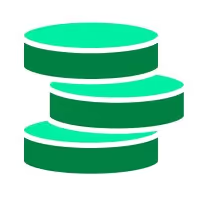Reply Alternatives
An in-depth look at 10 Reply alternatives. We analyze each tool's features and pricing to help you select a new sales engagement platform.

Reply is a popular tool for good reasons. It handles many tasks well, from finding emails and sales engagement to LinkedIn outreach. Many teams use it for its wide range of features, including its AI assistants and B2B database, which help automate sales workflows.
However, some users find the interface complex, and pricing can be a concern for smaller teams. Because of this, you might be looking for an alternative. We've analyzed the top options against Reply using G2 reviews to help you choose. Let's get started.
Consider 11x for Sales Automation
If your goal is to add digital workers to your sales team, 11x is a relevant option. The platform focuses on automating sales development tasks with AI agents that can handle research, outreach, and follow-ups.
For teams looking to explore this approach, 11x offers a different way to manage sales workflows. You can see how these digital workers operate and decide if they fit your strategy before exploring other direct alternatives.
We built 11x as a GTM platform that uses AI agents to run your sales process. One agent, Alice, finds prospects, handles outreach on email and LinkedIn, and maintains your CRM. Another, Julian, qualifies inbound leads and books meetings for your team.
Our platform unifies data enrichment, outreach, and email warmup capabilities. This approach removes the need for multiple separate point solutions.
Reply Alternatives
Here, we examine the top Reply alternatives. For each tool, we analyze its price, main features, and how its advantages and drawbacks compare to Reply.
1) Outreach
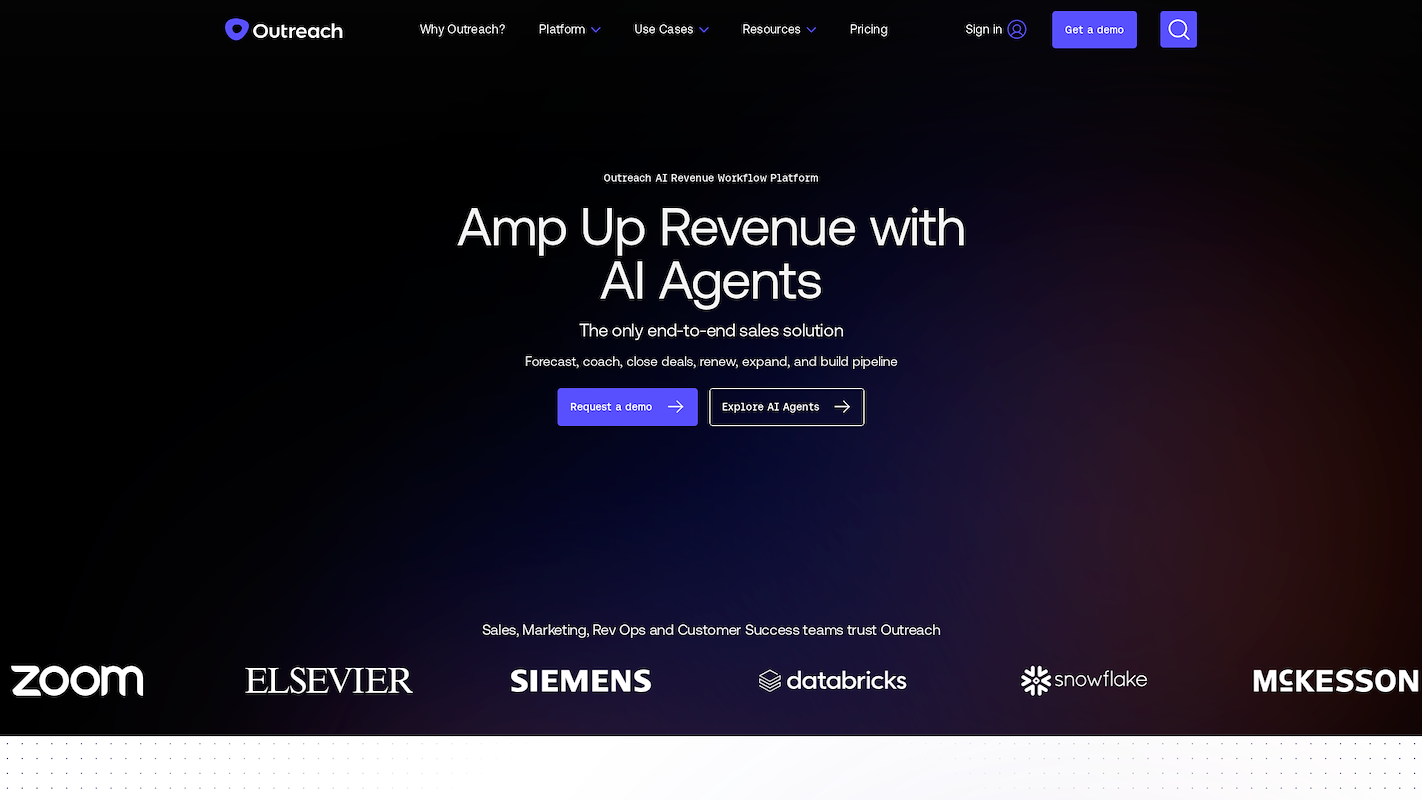
Outreach is an AI-powered platform for revenue teams. It uses generative AI agents and data-driven workflows to help forecast revenue, coach reps, and close deals. The system aims to build pipeline and manage deals with AI insights.
It also supports account retention and expansion through specific workflows. The platform handles the sales process from initial contact to renewal and provides tools to scale coaching programs.
Outreach's Main Features
- Provides AI agents for each stage of the revenue cycle, from prospecting to account expansion.
- Predicts revenue outcomes and identifies pipeline gaps with analytics and scenario forecasting.
- Delivers AI-driven rep coaching through meeting summaries, Q&A, and analytics via its Kaia feature.
- Analyzes buyer sentiment by detecting topics across meetings, calls, and emails.
Outreach vs. Reply: A Comparison
Average Review score: 4.3/5 stars based on 3,479 G2 reviews.
- Outreach provides revenue forecasting and pipeline gap analysis, offering a more strategic view compared to Reply's focus on direct engagement tasks.
- It includes an AI coaching tool, Kaia, that analyzes meetings and calls to provide rep feedback, a more developed coaching feature than what Reply offers.
- The platform analyzes buyer sentiment from calls and emails, giving deeper insights into prospect interactions than Reply's standard engagement metrics.
- This tool unifies sales engagement with revenue intelligence and operations in one platform, which can reduce the need for multiple separate tools.
Outreach vs. Reply: Potential Drawbacks
- Outreach does not offer a built-in B2B contact database, which Reply includes. This means users may need a separate tool for lead sourcing before starting campaigns.
- The platform's pricing is in a higher tier, making it a more significant investment for smaller teams. In comparison, Reply often provides plans that are more accessible for tighter budgets.
- Some users report that the system can be slow to load or experience sync issues with CRMs. This might cause minor delays in daily workflows, a challenge less frequently mentioned for Reply.
Budget and Pricing Considerations
Outreach does not list public pricing and typically requires a custom quote for its enterprise-focused platform. In contrast, Reply has more accessible plans for smaller teams. You will need to contact the Outreach sales team for specific cost information.
2) Salesloft
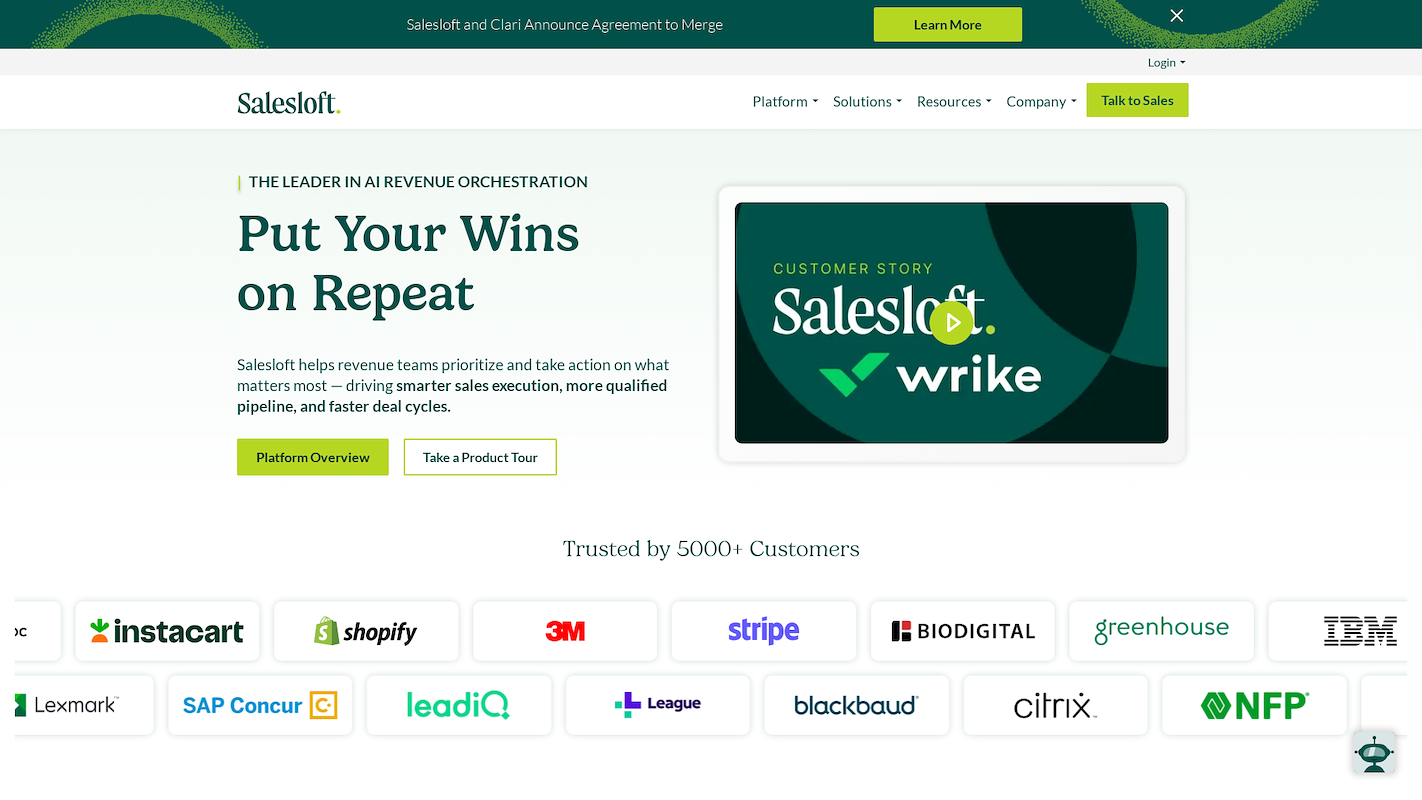
Salesloft is a Revenue Orchestration Platform that combines sales engagement with AI insights, deal management, and forecasting. Its AI agents find buyer signals and automate tasks to help teams build pipeline and shorten deal cycles.
The system supports opportunity management and customer retention through structured workflows. It aims to provide visibility and productivity gains quickly for revenue teams.
Salesloft's Main Features
- Offers an AI prioritization engine, Rhythm, that recommends the right actions at the right moments.
- Provides AI chat agents through Drift to engage website visitors with real-time, personalized conversations.
- Includes a Deals module for pipeline management with AI insights into risk, next steps, and velocity.
- Combines real-time deal data, AI, and seller input to generate more accurate sales forecasts.
Salesloft vs. Reply: A Comparison
Average Review score: 4.5/5 stars based on 4,145 G2 reviews.
- Salesloft provides a Deals module with AI-driven forecasting, which gives a more complete view of the sales cycle compared to Reply’s focus on engagement analytics.
- Its AI engine, Rhythm, prioritizes tasks and suggests the next best actions for reps. This offers more direct guidance than the general AI automation in Reply.
- The platform integrates AI chat agents through Drift to engage website visitors. This adds an inbound lead qualification channel that is not a native feature in Reply.
- It combines sales engagement with revenue intelligence, offering deeper insights into deal health and pipeline risk. Reply, in comparison, centers more on outreach performance metrics.
Salesloft vs. Reply: Potential Drawbacks
- Salesloft does not provide a built-in B2B contact database, a feature available in Reply. This requires teams to use a separate service for lead generation before starting outreach.
- Its pricing is in a higher tier, which may not suit smaller teams. Reply, in contrast, provides plans that are often more accessible for businesses with limited budgets.
- The platform lacks a native email warmup tool for improving sender reputation. This is a feature that Reply includes to help with email deliverability before a campaign starts.
Budget and Pricing Considerations
Salesloft requires a custom quote, which is typical for enterprise platforms, while Reply offers more accessible pricing plans. For the most accurate cost information, you should visit Salesloft's official website.
3) Apollo.io
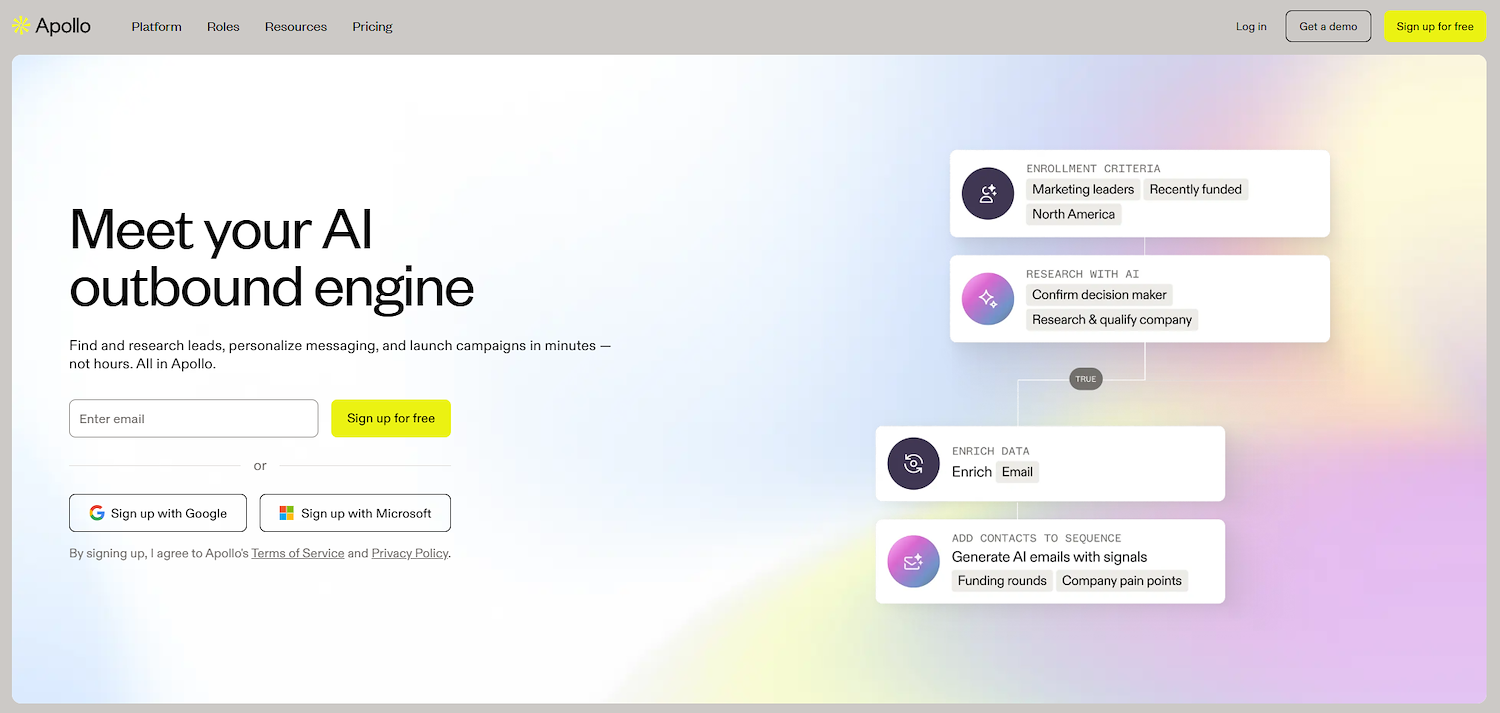
Apollo.io is a sales platform with a B2B database and engagement tools. It handles data enrichment, email verification, and outreach on email and LinkedIn. The system includes a phone dialer, an AI email assistant, AI agents, an AI SDR for inbound work, and an email warm-up function.
Apollo.io's Main Features
- Offers a B2B database with integrated data enrichment and email verification.
- Provides an AI SDR to handle inbound lead qualification and follow-up.
- Includes a native phone dialer for making calls directly from the platform.
- Features an AI email assistant to help write and personalize sales emails.
How Apollo.io Compares to Reply
Average Review score: 4.7/5 stars based on 8,904 G2 reviews.
- Apollo.io provides a more extensive B2B database with over 210 million contacts, offering a larger pool for prospecting compared to Reply's database.
- The platform integrates its large contact database directly with its sales engagement tools, creating a single system for finding and contacting leads.
- It includes a native phone dialer for making calls directly from the platform, a feature that is more integrated than in Reply.
- This tool offers a free plan, which makes it a more accessible starting point for individuals and small teams compared to Reply's paid-only structure.
- Apollo.io features an AI SDR to handle inbound lead qualification, which is a more specialized function than Reply's general AI automation features.
Apollo.io vs. Reply: Potential Drawbacks
- While its database is large, some users report that Apollo.io's contact information can be out of date. This may lead to higher email bounce rates compared to the data quality some expect from a platform like Reply.
- The platform's contact management system can feel less intuitive for some teams. Users who need a simple way to organize prospects might find it requires more setup than a more focused tool like Reply.
- As an all-in-one system, it includes many features. For teams that only need core sales engagement functions, this broad scope can feel overwhelming compared to Reply's more direct approach.
Budget and Pricing Considerations
Apollo.io offers a free plan, making it more accessible than Reply for individuals and small teams. Its paid plans start at $49 per user monthly, which provides a clear, low-cost option. For a full breakdown of tiers, visit Apollo.io's official website.
4) HubSpot Sales Hub
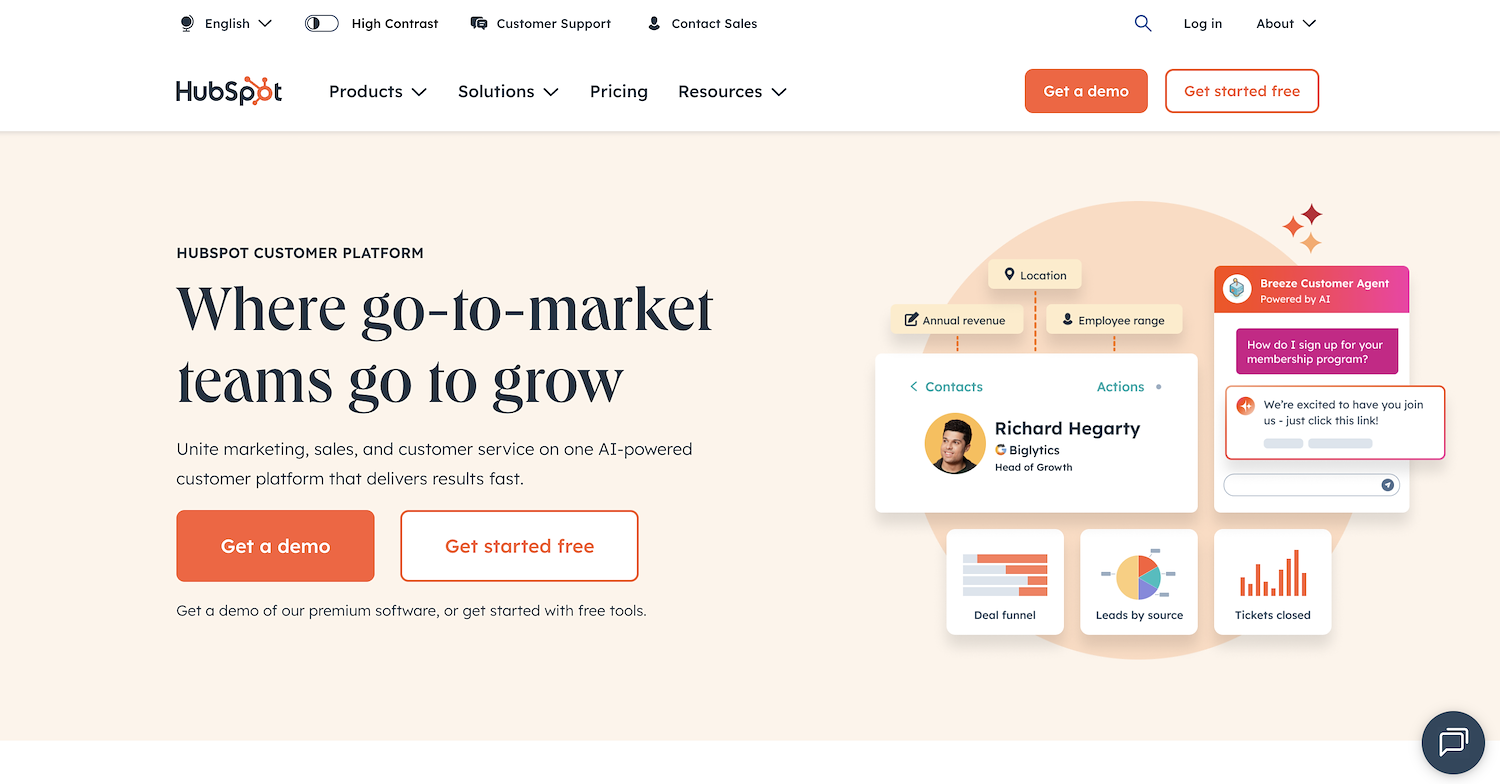
HubSpot Sales Hub is a sales software built on the HubSpot CRM platform. It offers tools for sales engagement, email outreach, and deal automation. The system also includes a phone dialer and AI assistance to help teams connect with prospects and manage their pipeline.
HubSpot Sales Hub's Main Features
- Includes deal and pipeline management tools with quote creation, e-signature, and payments.
- Provides AI-powered forecasting and predictive lead scoring for sales analytics.
- Offers sales enablement materials like playbooks, scripts, and battlecards.
- Features an AI chat agent to answer prospect questions on a 24/7 basis.
HubSpot Sales Hub vs. Reply: A Comparison
Average Review score: 4.4/5 stars based on 12,407 G2 reviews.
- HubSpot Sales Hub is built on a native CRM platform. This gives teams a single system for all customer data, unlike Reply, which operates as a separate engagement tool.
- It includes tools for the full sales cycle, like quote creation and payment processing. This provides more end-to-end deal management than Reply's focus on outreach.
- The platform offers predictive lead scoring to help reps prioritize their efforts. This is a more advanced analytical feature compared to the engagement metrics in Reply.
- This tool provides built-in sales enablement content, such as playbooks and scripts. This helps standardize sales messaging, a feature not found within Reply.
HubSpot Sales Hub vs. Reply: Potential Drawbacks
- HubSpot Sales Hub does not include a native B2B contact database. This is different from Reply, which provides one for lead sourcing. Users may need a separate tool to find prospects before they start outreach campaigns.
- The platform lacks a built-in email warmup feature. In comparison, Reply includes this tool to help improve sender reputation and email deliverability. This might require users to find a third-party solution for this task.
- Some teams might find the platform's scope too broad if they only need sales engagement. Since it is part of a full CRM, it has many features. Reply, on the other hand, offers a more focused approach.
- Its pricing structure can become costly for larger teams, as costs scale per user. Reply often presents more budget-friendly plans, which can be a better fit for teams that need to manage expenses closely.
Budget and Pricing Considerations
HubSpot Sales Hub offers a free CRM, with paid plans starting at $20 per user monthly. While Reply has no free plan, its paid options are often more budget-friendly for teams that only need sales engagement features and not a full CRM suite.
5) Mailshake
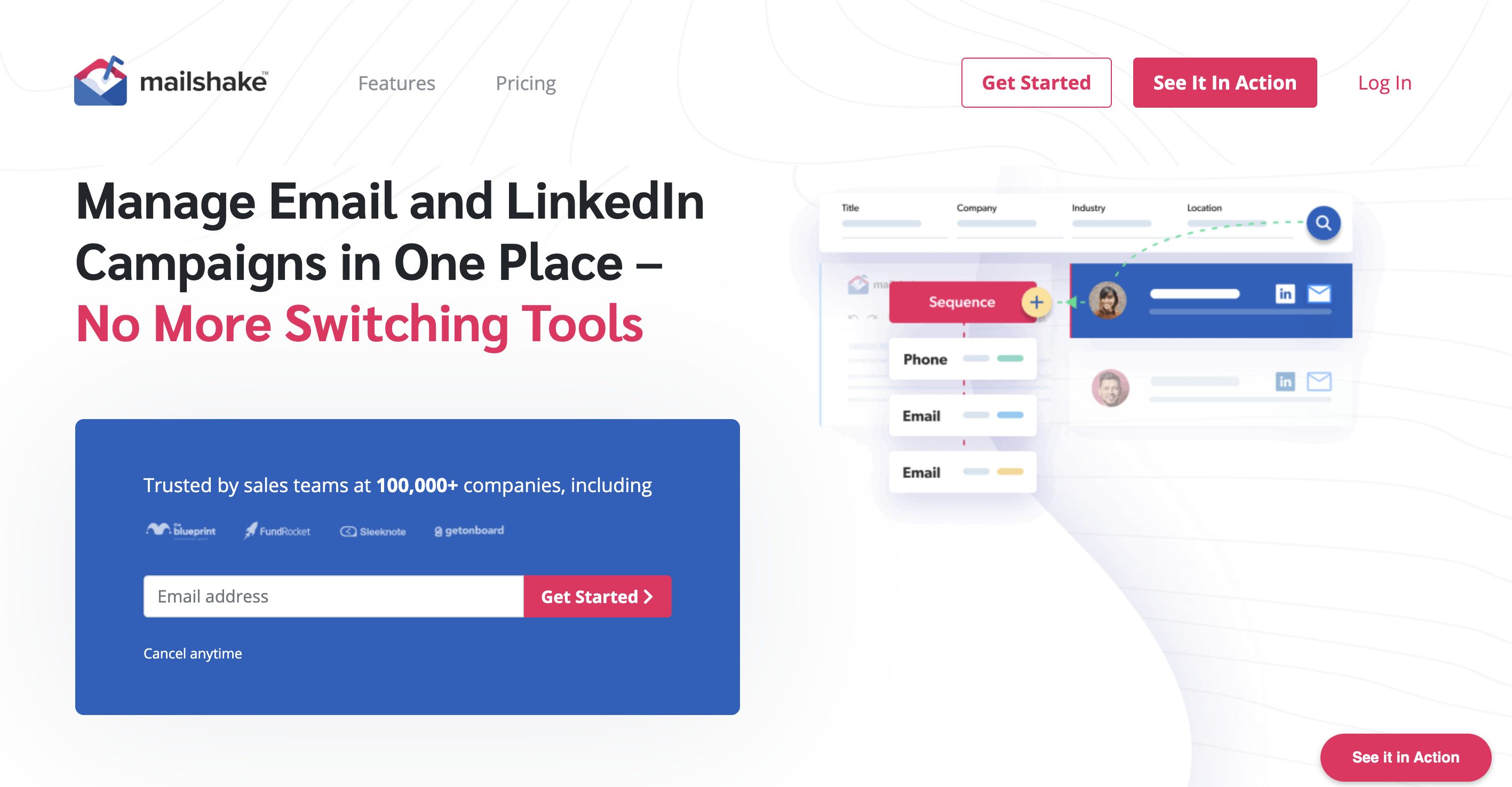
Mailshake is a sales engagement tool for cold outreach. It provides a B2B database, an email finder with verification, and data enrichment. Teams can contact prospects through email, a phone dialer, and social media.
The platform also offers an AI assistant for email copy and an email warm-up function. It supports sales teams that need a multi-channel approach for outreach.
Mailshake's Main Features
- Offers a data finder with a built-in database to search and purchase verified prospect email addresses.
- Provides an email deliverability suite that includes a domain setup assistant, email warm-up, list cleaning, and a copy analyzer.
- Includes a Lead Catcher feature that prioritizes highly engaged prospects in a dedicated queue for quick action.
- Features an AI email writer, SHAKEspeare, that generates and spins copy, subject lines, and A/B test variants.
Mailshake vs. Reply: A Comparison
Average Review score: 4.7/5 stars based on 326 G2 reviews.
- Mailshake offers a full deliverability suite with a domain setup assistant and copy analyzer. This provides more support for email health compared to Reply, which focuses mainly on an email warm-up tool.
- The platform includes a Lead Catcher feature. It automatically queues leads with high engagement for follow-up, which is a more direct way to prioritize prospects than Reply's general metrics for engagement.
- Its AI email writer, SHAKEspeare, generates and A/B tests email copy variations. This is a more specialized tool for copy than the broader AI assistants available in Reply.
- Mailshake provides a starter plan at $29 per month. This makes it a more accessible option for individuals or small teams, while Reply's plans are often in a higher price range.
Mailshake vs. Reply: Potential Drawbacks
- Mailshake offers general social media tasks. In comparison, Reply provides more advanced automation specifically for LinkedIn, which is a significant channel for many B2B sales teams.
- The tool's AI assistant, SHAKEspeare, primarily generates email copy. Reply's AI capabilities are broader and can automate entire workflows, not just content creation.
- Some users report that its integrations with CRMs can sometimes be less reliable. In contrast, Reply generally offers more stable connections with major CRM platforms, which ensures smoother data synchronization.
Budget and Pricing Considerations
Mailshake’s starter plan is $29 per month, with an email outreach plan at $59 per month. This offers a more accessible entry point than Reply, which generally has higher starting costs. For a full breakdown, visit Mailshake's official website.
Explore 11x for AI Sales Agents
If your team wants to use AI agents for sales, 11x offers a focused platform. Its digital workers handle prospecting, outreach, and CRM updates. This approach lets you test the impact of AI agents on your sales process before a broader change.
With 11x, we use AI to run your sales playbook. Our agent Alice finds accounts and handles outreach, while Julian qualifies inbound leads and schedules meetings. We unify data, outreach, and email warmup, replacing multiple tools in your GTM stack.
Book a demo to see our platform in action.
6) Klenty

Klenty is a sales engagement platform for multi-channel outreach. It supports contact through email, LinkedIn, and a phone dialer. The system includes an email finder with a B2B database, verification, and data enrichment tools.
The platform offers an email warm-up function, an AI email assistant, and AI agents for tasks like inbound SDR work. It combines data, outreach, and AI features in one system.
Klenty's Main Features
- Offers a sales dialer with parallel dialing for up to five numbers at once and a power dialer for sequential list dialing.
- Includes AI talk-track tables to provide real-time coaching and enforce cold-calling methodology during calls.
- Provides an AI inbound SDR, SchedX, that qualifies website leads using frameworks like BANT or MEDDIC.
- Features an autonomous AI outbound SDR, SDRx, that researches accounts, creates outreach, and books meetings.
Klenty vs. Reply: A Comparison
Average Review score: 4.6/5 stars based on 387 G2 reviews.
- Klenty provides a sales dialer with a parallel dialing function for up to five numbers at once, offering a different approach to call volume than Reply.
- It includes AI talk-track tables to guide reps during live calls, a feature for real-time coaching not present in Reply.
- The platform offers an AI inbound SDR, SchedX, that qualifies leads from your website. This is a more specialized function than Reply's general AI assistants.
- An autonomous AI outbound SDR, SDRx, is available to research accounts and create outreach, which automates more of the prospecting workflow compared to Reply.
Klenty vs. Reply: Potential Drawbacks
- Klenty's LinkedIn automation is sometimes reported as limited. In comparison, Reply provides more advanced functions, which means Klenty users might perform more manual tasks on the platform.
- The platform can sometimes feel slow, according to user feedback. This may cause minor delays in daily workflows, a point less frequently raised about Reply.
- Some users report occasional sync issues with certain CRMs. This might require manual data checks, a step that is often less necessary with Reply's generally stable integrations.
Budget and Pricing Considerations
Klenty offers plans at $50, $70, and $100 per user monthly, providing a clear pricing scale. Reply's pricing is not public but is generally considered to be in a similar range for its core engagement features.
7) Lemlist
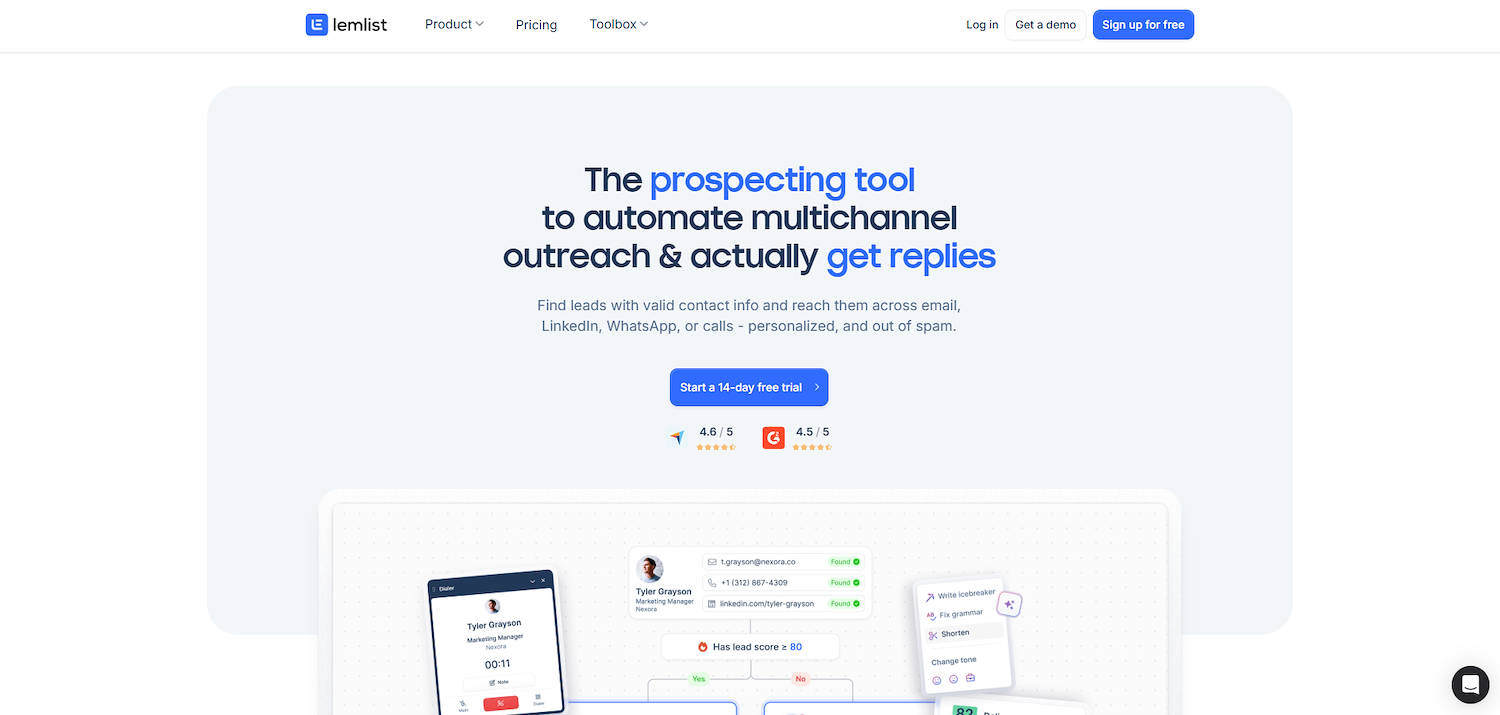
Lemlist is a sales engagement platform for multi-channel outreach. It offers a B2B database, an email finder, and verification tools. The system supports contact with prospects via email, phone, and LinkedIn.
It also includes data enrichment and an email warm-up feature. An AI assistant helps with email copy, and AI agents can manage inbound SDR tasks.
Lemlist's Main Features
- Offers a sequence builder for multichannel outreach that includes email, LinkedIn, WhatsApp, and calls.
- Provides dynamic variables to personalize text, images, and custom landing pages for each prospect.
- Includes a unified inbox that threads all touchpoints with a prospect across every channel.
- Gives free access to its lemwarm tool with each seat to warm up email accounts and boost deliverability.
Lemlist vs. Reply: A Comparison
Average Review score: 4.4/5 stars based on 276 G2 reviews.
- Lemlist allows for dynamic personalization with images and custom landing pages in emails. This offers a different way to customize outreach compared to Reply's standard text-based personalization.
- It includes WhatsApp in its multi-channel sequences, which adds another touchpoint for outreach. Reply, in comparison, focuses its automation primarily on email and LinkedIn.
- The platform provides a unified inbox that combines interactions from all channels, including email, LinkedIn, and calls. This is different from Reply, where engagement is often tracked per channel.
- This tool includes its lemwarm email warm-up feature for free with every plan. While Reply also has a warm-up tool, Lemlist packages it as a standard inclusion.
Lemlist vs. Reply: Potential Drawbacks
- Lemlist’s AI capabilities focus more on specific tasks like email writing. In comparison, Reply provides AI assistants that can manage broader sales workflows from start to finish.
- Its LinkedIn automation is less extensive when compared to Reply. Teams that need to run complex, multi-step sequences on LinkedIn might find Reply offers more advanced functions.
- Some users report that the data enrichment system can have technical issues. This may disrupt prospecting, a challenge that is less frequently mentioned for Reply.
Budget and Pricing Considerations
Lemlist has a free plan and a Multichannel Expert tier at $79 per month, which makes it more accessible than Reply. Reply does not offer a free plan or public pricing. For a full breakdown of costs, visit Lemlist's official website.
8) Woodpecker.co
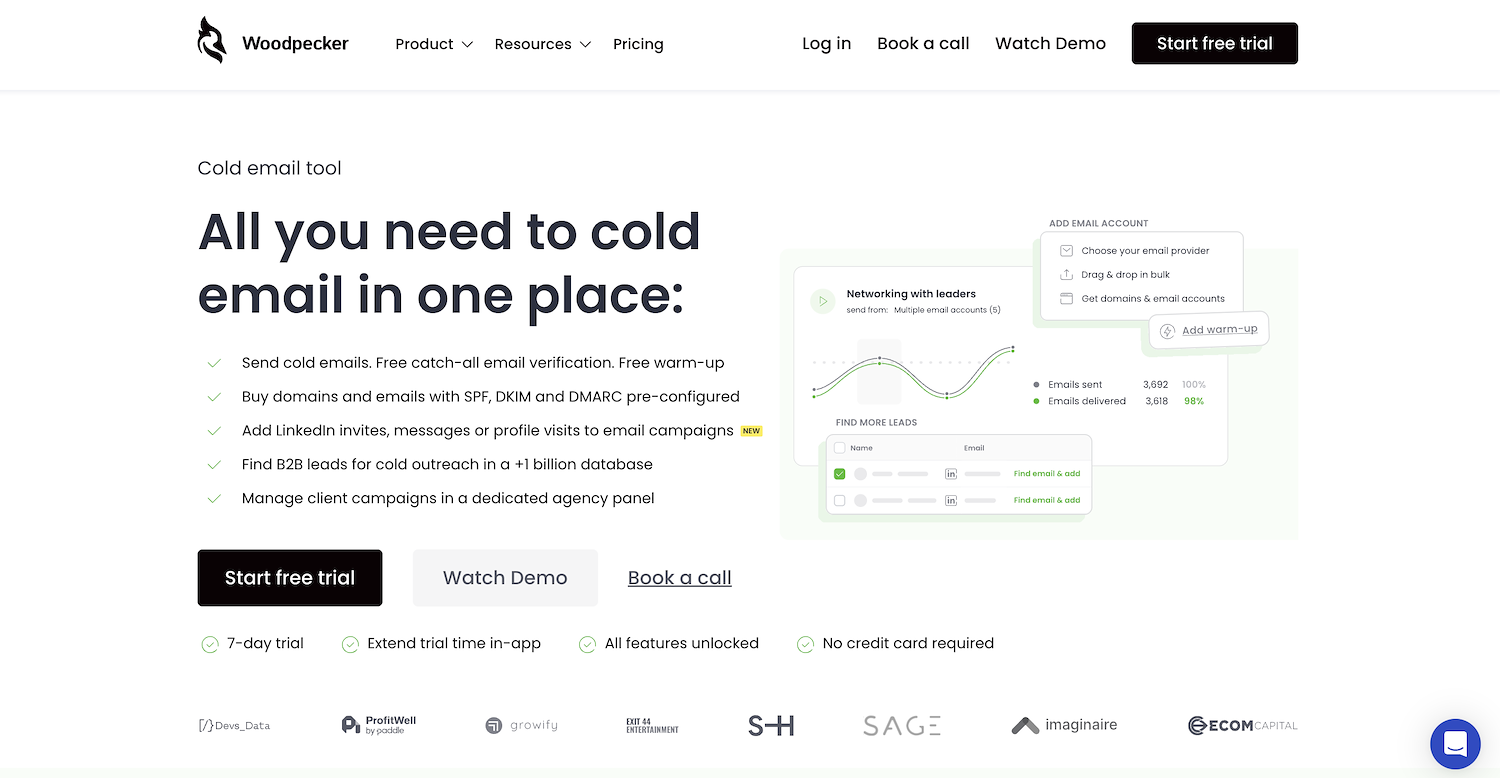
Woodpecker.co is a sales engagement platform for multi-channel outreach. It supports contact with prospects via email, LinkedIn, and a phone dialer. The system includes a B2B database with an email finder, verification, and data enrichment tools.
It also has an email warm-up function and an AI assistant for email copy. The platform combines data, outreach, and automation features for sales teams.
Woodpecker.co's Main Features
- Sends campaigns from multiple email accounts without charging per seat.
- Includes a bounce shield to avoid exceeding email provider sending limits.
- Tests up to five different email versions to find the most effective copy.
- Provides a white-label reporting app and a client management panel for agencies.
Woodpecker.co vs. Reply: A Comparison
Average Review score: 4.5/5 stars based on 93 G2 reviews.
- Woodpecker.co lets you send campaigns from multiple email accounts without extra charges per seat, which is different from Reply's typical per-user pricing model.
- It allows you to A/B test up to five different email versions at once, offering more variants for testing compared to Reply's standard options.
- The tool provides a white-label reporting app and a client management panel, which are features designed for agencies that are not available in Reply.
- Its Bounce Shield feature helps prevent exceeding email provider sending limits, offering a specific deliverability control that differs from Reply's general warm-up tools.
Woodpecker.co vs. Reply: Potential Drawbacks
- Woodpecker.co's AI assistant focuses on writing email copy. In comparison, Reply offers AI that can manage entire sales workflows, which provides a different level of automation for teams that need it.
- Its LinkedIn automation is less extensive when compared to Reply. Teams that rely on complex, multi-step LinkedIn sequences may find Reply offers more advanced functions for that specific channel.
- Some users report that its CRM integrations can be less consistent. This might require more manual checks to ensure data syncs correctly, a point less often noted with Reply's generally stable connections.
Budget and Pricing Considerations
Woodpecker.co has a starting plan at $29 per month, making it an accessible option for smaller teams. In contrast, Reply does not list public pricing and typically requires a custom quote, which may place it in a higher cost bracket. For a full breakdown, visit the official Woodpecker.co website.
9) Mixmax

Mixmax is a sales engagement platform for multi-channel outreach. It supports contact with prospects via email, LinkedIn, and a phone dialer. The system includes a B2B database, an email finder with verification, and data enrichment tools.
It also offers an email warm-up function, an AI email assistant, and AI agents to manage inbound SDR tasks. The platform integrates data, outreach, and automation for sales teams.
Mixmax's Main Features
- Operates directly within the user's inbox to manage workflows without switching applications.
- Includes email enhancements such as polls and surveys to increase prospect engagement.
- Provides email tracking with analytics on open rates, link activity, and attachment views.
- Integrates calendaring tools to schedule meetings directly from the inbox.
Mixmax vs. Reply: A Comparison
Average Review score: 4.6/5 stars based on 1,433 G2 reviews.
- Mixmax operates directly within a user's Gmail inbox. This is different from Reply, which functions as a separate application and requires users to switch tabs to manage tasks.
- It includes interactive elements like polls and surveys directly in emails. This provides another way to engage prospects compared to Reply's focus on text-based outreach.
- The tool integrates its calendaring features into the inbox. This allows for scheduling meetings without leaving Gmail, offering a more unified workflow than Reply's separate scheduling interface.
- This platform provides detailed analytics on attachment views. This gives deeper insight into how prospects interact with sent materials, a more specific tracking feature than Reply's general engagement metrics.
Mixmax vs. Reply: Potential Drawbacks
- Mixmax does not have a built-in B2B database. This means teams need a separate tool to find prospects, unlike with Reply, which includes a database for lead sourcing.
- The platform's AI helps with specific tasks but does not automate entire workflows. Reply, in comparison, uses AI agents to manage the whole sales process, which offers a different level of automation.
- Its LinkedIn automation is less advanced when compared to Reply. Teams that need complex, multi-step sequences on LinkedIn might find Reply offers more powerful features for that channel.
Budget and Pricing Considerations
Mixmax offers a Growth plan at $49 per user monthly, providing a clear pricing structure for budget planning. Reply does not list public pricing and requires a custom quote, which may offer more flexibility for enterprise deals but lacks upfront transparency. For a full breakdown, visit Mixmax's official website.
10) Groove
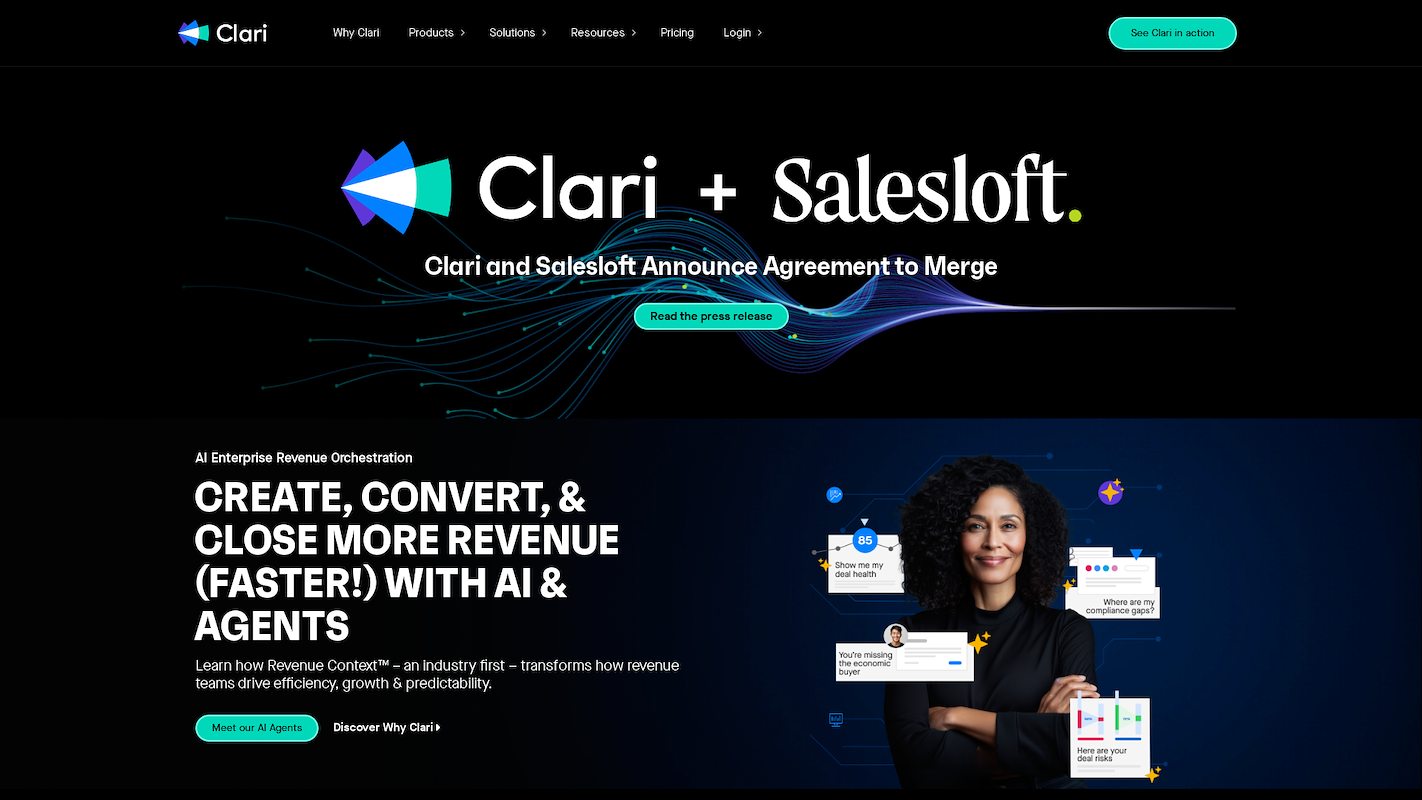
Groove is a sales engagement platform built for companies that use Salesforce. It operates as a Salesforce-native system to automate tasks outside of sales and lets teams work from their inbox. The platform handles outreach through email, phone, and LinkedIn.
This approach allows sellers to concentrate on revenue and customer relationships, not administrative duties. It connects engagement activity with the CRM data inside Salesforce.
Groove's Main Features
- Manages support issues through ticket and case management.
- Converts incoming emails into support cases within the platform.
- Automates tasks and processes with customizable workflow rules.
- Controls team access and permissions through user and role management.
Groove vs. Reply: A Comparison
Average Review score: 4.6/5 stars based on 193 G2 reviews.
- Groove provides ticket and case management for customer support issues. This is different from Reply, which focuses on sales outreach automation.
- It converts incoming emails into support cases. In comparison, Reply uses email to execute outbound sales sequences.
- The platform includes user and role management for support teams. Reply's user management is built for sales team roles and campaign access.
- This tool offers a knowledge base for customer self-service. Reply does not have a comparable feature, as its system is designed for direct outreach.
Groove vs. Reply: Potential Drawbacks
- Groove does not have a built-in B2B database for finding new prospects. This is different from Reply, which includes this feature, so teams might need a separate tool for lead generation.
- The platform's automation centers on support tasks, such as managing tickets. It does not provide AI agents to run entire sales workflows, a feature that is available in Reply for end-to-end outreach.
- Some users report that it lacks specific sales tools, such as a native email warm-up function. Reply includes this feature to help improve sender reputation before outreach campaigns begin.
Budget and Pricing Considerations
Groove provides clear pricing tiers, starting at $15 per user monthly. Reply does not offer public pricing and requires a custom quote. This makes Groove more accessible for teams that need predictable costs, while Reply's model is designed for custom enterprise needs.
Which One Should You Go With?
Your choice of a Reply alternative depends on many variables. This guide has outlined several options to help you make an informed decision.
If you want to use AI agents to run your sales process, 11x offers a platform to do so. Our digital workers handle prospecting, outreach, and CRM updates, which can replace multiple point solutions in your GTM stack.




